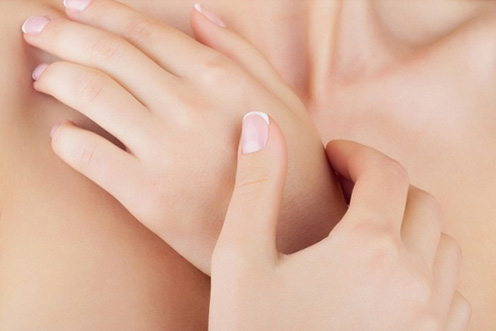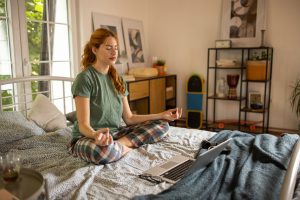How to Perform a Self Breast Exam

October is almost upon us, which means it’s nearly breast cancer awareness month. While we applaud the cause, we believe it’s important for women to be aware of the symptoms and preventative measures of breast cancer every month. And one of the best places to start is with a self-examination.
Although the risk of this type of cancer increases with age, it’s a good idea for women of all ages to conduct a self-exam on a regular basis. The self-exam allows you to become familiar with how your breasts feel normally, making it much easier for her to note any changes.
What to feel for:
Slight changes in size or tenderness may occur naturally due to hormonal fluctuations associated with the menstrual cycle. During the self-exam, you are looking for changes in thickness or hardness of tissues. These changes are usually described as a ‘lump’.
When and how:
The self-exam should be performed once a month. In the shower, you can use the pads of your finger to move around your breast in a circular fashion from the outermost portion of tissue to the area around the nipple. You should also examine the area under your armpit where the major lymph node is located.
What to look for in the mirror:
After your shower, you should stand in front of the mirror and look at the shape, size and lower contour of your breasts with your arms at your sides. Raising your arms above your head causes your breasts to rise up slightly and gives you a different viewpoint of how they normally look. Changes you want to look for include swelling, skin dimpling or changes in contour—anything that looks different.
Hands on the hips:
If you place your hands on your hips, you can flex your chest (pectoral) muscles to give yourself another viewpoint. You can face the mirror and then turn to each side to see if you notice anything different. You will usually notice some difference between your right and left breasts, but if the difference is new, talk to your doctor.
Lying down position:
Lying down is sometimes the easiest way to notice any new lumps because the breast tissue spreads out evenly and you can press down against the chest wall. It is generally recommended that you vary the pressure, move your fingertips in a circular fashion as you did in the shower, and squeeze the nipple to check for any discharge after completing the full circle.
If you do find a lump
If you do find a lump, you should see your doctor, but don’t worry too much. Most lumps are not cancerous. The purpose of breast cancer awareness is to find those that are cancerous and find them sooner, rather than later.











